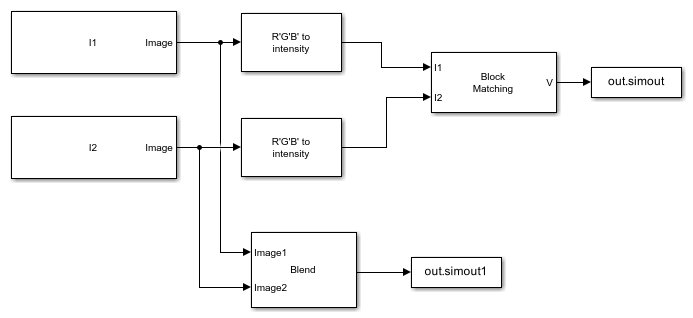Estimate Motion Between Two Images
This example shows how to use the Block Matching block to estimate motion between two images.
Read image frames for which motion has to be estimated.
I1 = imread('car_frame1.png'); I2 = imread('car_frame2.png');
Example Model
Open the model by calling the open function in MATLAB® command prompt. Specify the name of the Simulink® file to open.
open_system('ex_blockmatching.slx');

Load the images into the model workspace by using the Image From Workspace block. To directly read images from a file location, use the Image From File block instead. The model estimates motion between two RGB images of a moving car that are captured at different time intervals. The model uses the three step block matching algorithm for motion estimation. The cost function for matching the non-overlapping macro blocks is set to mean square error (MSE). The size of the macro blocks is set to 35-by-35 and maximum displacement (in horizontal and vertical direction) allowed for the matching blocks is set to 7 pixels. The velocity output from the Block Matching block consists of both the horizontal and vertical components of the motion vector in complex form.
You can use the Compositing block to overlay both the images.
Run Model
Simulate the model and save the model output to MATLAB workspace. The model outputs the motion vector and the overlaid image.
out = sim('ex_blockmatching.slx');
Display Results
Read the output motion vector and the overlaid image.
vx = real(out.simout.Data); vy = imag(out.simout.Data); imageOverlay = out.simout1.Data;
Specify the points on the image plane relative to the size of the macro blocks.
x = 1:35:size(imageOverlay,1); y = 1:35:size(imageOverlay,2);
Display the overlaid image and plot the horizontal and vertical components of the motion vector by using the quiver function.
figure,imshow(imageOverlay);
hold on
quiver(y',x,vx,vy,0);
